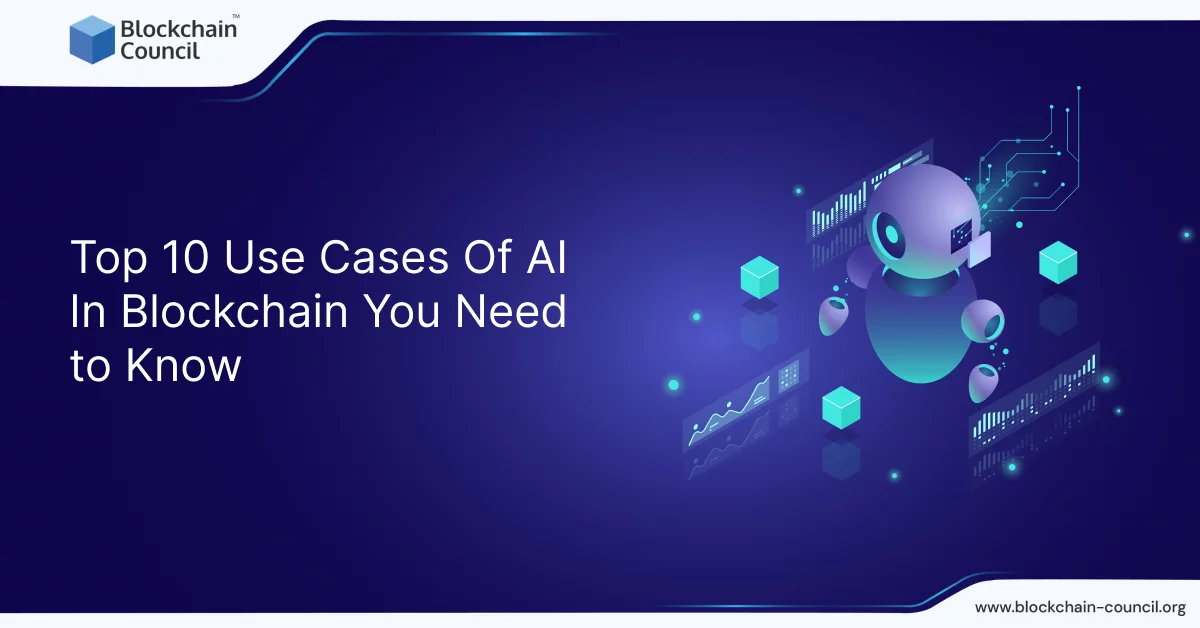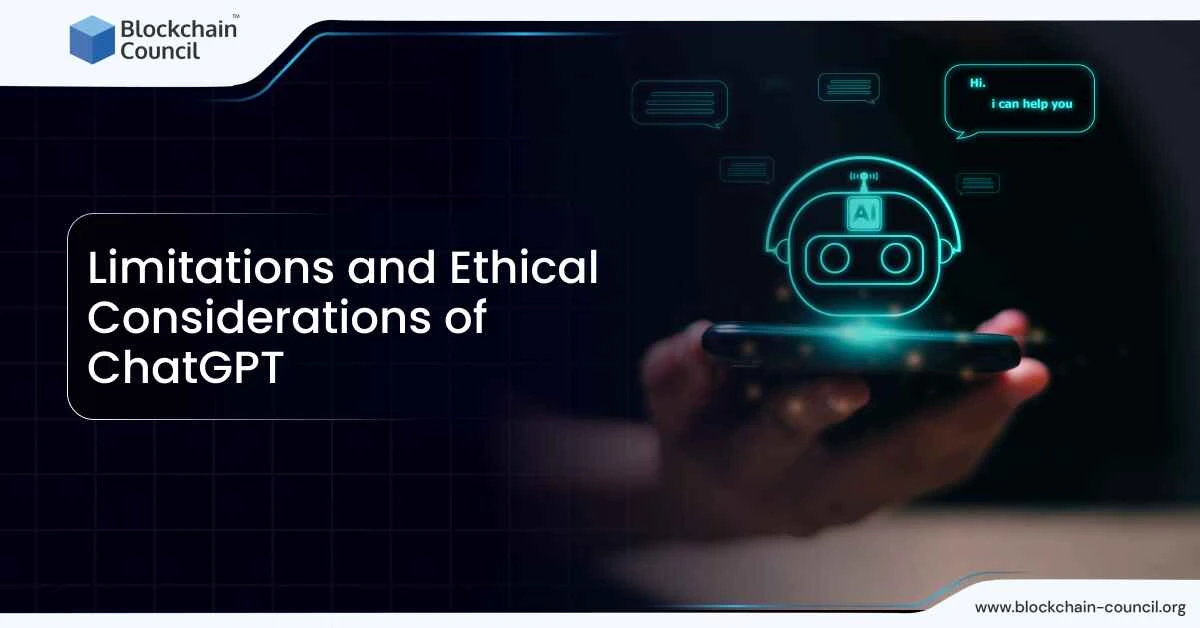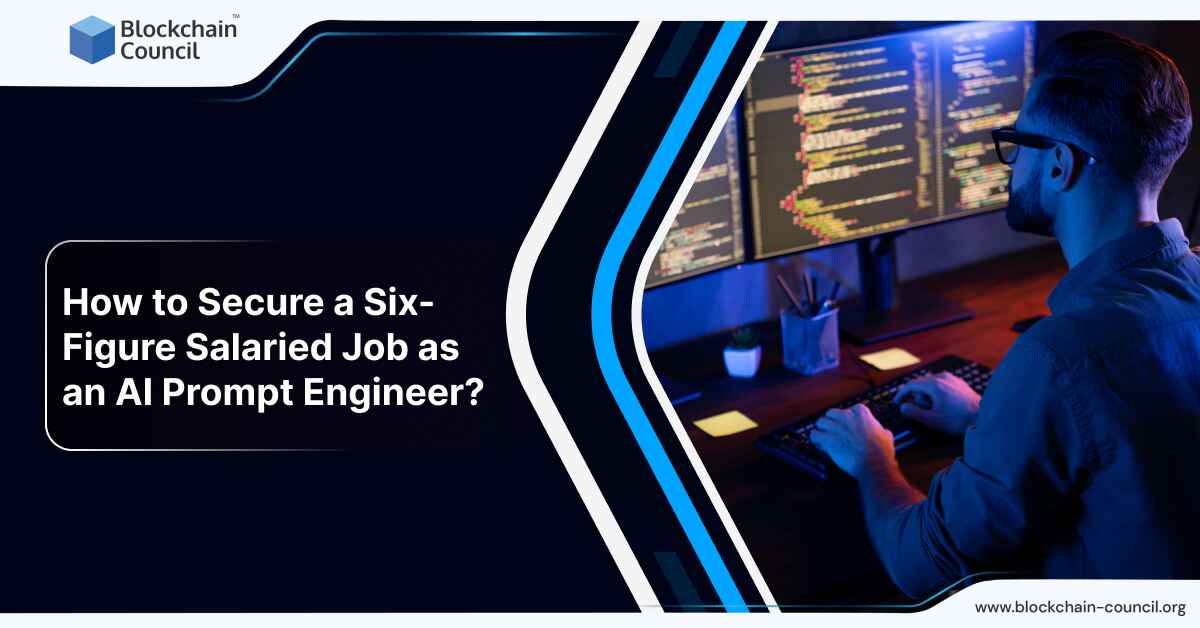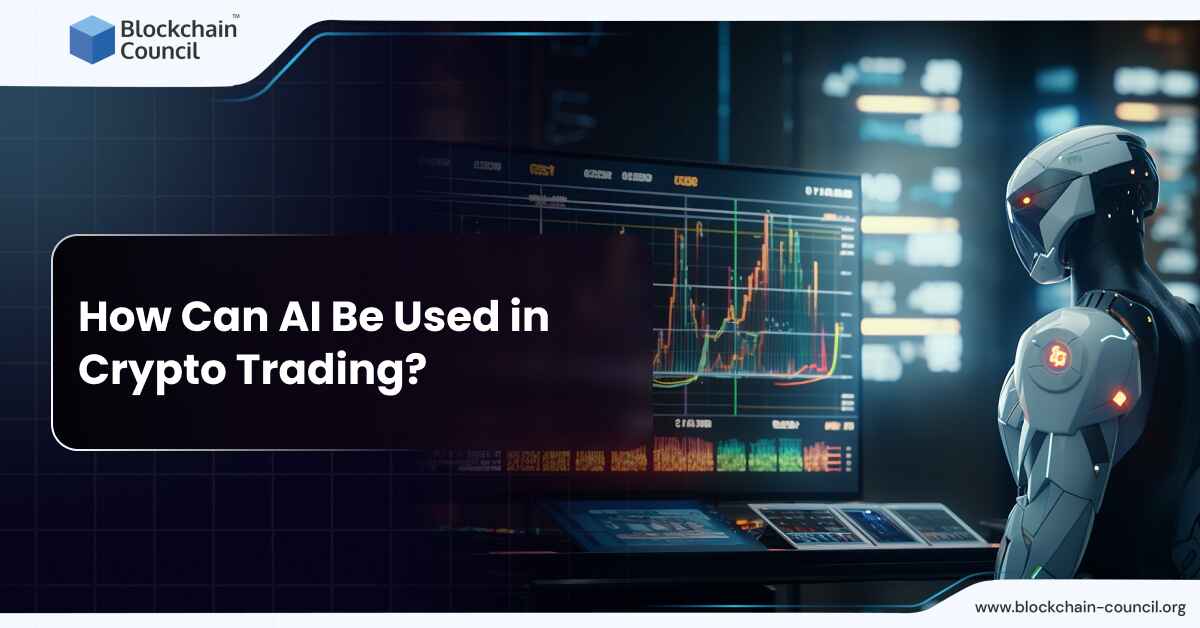
- Blockchain Council
- May 10, 2024
Summary
- Blockchain is decentralized and secures data with its distributed nature.
- AI enhances security in Blockchain by monitoring transactions for anomalies.
- AI prevents fraud and cyberattacks in real-time through behavioral analysis and smart contract security.
- AI adds biometric authentication and detects malware in Blockchain networks.
- Smart contracts are optimized by AI with continuous monitoring and error handling.
- Tokenization of assets is made accessible with AI, allowing for fractional ownership.
- AI plays a vital role in decision-making within Decentralized Autonomous Organizations (DAOs).
- Predictive analytics enable the forecasting of trends and market behavior in Blockchain.
- AI-driven compliance solutions monitor Blockchain transactions, ensuring adherence to regulations.
- AI detects fraudulent transactions by analyzing user behavior and patterns in real-time, enhancing trust in Blockchain systems.
In the ever-evolving landscape of technology, two revolutionary forces have emerged – Artificial Intelligence (AI) and Blockchain. While each of these innovations has made a profound impact on its own, the combination of AI and Blockchain presents a synergy that promises to reshape industries across the board. In this article, we’ll delve into the intricacies of AI and Blockchain, exploring their individual significance and uncovering the transformative potential that arises when these two technologies converge.
Brief Explanation of AI and Blockchain
Artificial Intelligence (AI)
AI, in its essence, refers to the ability of machines to mimic human intelligence. It involves the development of algorithms and models that enable computers to perform tasks that typically require human intelligence. These tasks encompass a wide spectrum, ranging from natural language processing and image recognition to complex decision-making processes.
AI is powered by neural networks, which are computing systems inspired by the human brain. These networks enable AI systems to learn from data, identify patterns, and make predictions or decisions based on the acquired knowledge. In the context of AI’s role in Blockchain, this capacity for pattern recognition and data analysis becomes particularly pertinent.
Blockchain
Blockchain, on the other hand, is a decentralized and immutable digital ledger technology. It gained prominence as the foundational technology behind cryptocurrencies like Bitcoin. A Blockchain consists of a chain of blocks, each containing a record of transactions. What sets it apart is its distributed nature, ensuring that no single entity has control, making it highly secure and resistant to tampering.
Transactions on a Blockchain are transparent and traceable, enhancing trust among participants. Additionally, the data stored on a Blockchain is secure and immutable, making it an ideal candidate for recording and verifying transactions across various industries.
Top 10 Use Cases Of AI In Blockchain
1. Enhanced Security
Using AI for Robust Security in Blockchain
One of the most significant advantages of incorporating AI into Blockchain is the enhancement of security protocols. Traditional Blockchain networks rely on cryptographic techniques to secure data, making it incredibly difficult for unauthorized access. However, AI adds an extra layer of intelligence to this security framework.
AI-driven algorithms continuously monitor Blockchain transactions and network activities in real-time. This proactive surveillance enables the identification of anomalies or suspicious behavior that may signal a security threat. These algorithms can detect even the most subtle deviations from the norm, reducing the risk of data breaches.
Preventing Fraud and Cyber Attacks
Blockchain is often touted as immutable, making it difficult to alter historical data. However, AI augments this immutability by identifying and preventing fraudulent activities in real-time. Here’s how AI accomplishes this:
- Behavioral Analysis: AI algorithms analyze user behavior patterns within the Blockchain network. Any sudden changes or irregularities trigger alerts. For instance, if an authorized user suddenly attempts to access sensitive data, AI flags it as suspicious and takes preventive measures.
- Smart Contract Security: Smart contracts are the building blocks of many Blockchain applications. AI can scrutinize these contracts for vulnerabilities and weaknesses, reducing the risk of exploitation.
- Threat Prediction: AI uses historical data and machine learning to predict potential threats. By analyzing past cyberattacks and their methods, AI can anticipate and prepare for future attacks.
- Biometric Authentication: AI-powered biometric authentication adds an additional layer of security to Blockchain networks. Users can be verified through facial recognition, fingerprint scans, or other biometric data, reducing the risk of unauthorized access.
- Malware Detection: AI can identify and mitigate malware that might attempt to compromise the security of the Blockchain network.
2. Smart Contracts Optimization
How AI Can Improve Smart Contract Execution
Smart contract execution relies on the accuracy of predefined conditions. Here’s how AI is stepping in to make execution smarter and more efficient:
- Enhanced Monitoring: AI-powered tools continuously monitor smart contracts, keeping an eagle eye on transactions. They can instantly detect unauthorized or unusual activities, triggering alerts for immediate action. This real-time monitoring ensures the contract behaves as intended.
- Predictive Analysis: AI employs predictive analytics to anticipate potential issues before they become problems. By analyzing historical data, AI can foresee contract execution challenges, allowing for preventive measures.
- Automated Error Handling: AI-driven bots can automatically rectify minor errors, ensuring that the contract continues without human intervention. This reduces downtime and ensures smoother execution.
- Natural Language Processing (NLP): NLP capabilities enable smart contracts to understand and process human-readable terms and conditions. This bridges the gap between legal contracts and their digital counterparts, making smart contracts more accessible.
- Scalability: AI can optimize smart contracts for scalability, ensuring they can handle a growing number of transactions without compromising performance. This is vital for Blockchain networks with high traffic.
Reducing Contract Disputes and Errors
Contract disputes and errors are common pain points in the world of smart contracts. AI offers innovative solutions to mitigate these issues:
- Smart Contract Auditing: AI-based auditing tools thoroughly review smart contracts for vulnerabilities and coding errors. This proactive approach prevents potential security breaches and disputes.
- Risk Assessment: AI assesses the risk associated with each contract, providing stakeholders with a clear understanding of the potential consequences. This transparency helps in making informed decisions.
- Conflict Resolution: AI-powered dispute resolution systems can efficiently handle disagreements by analyzing contract terms and transaction history. This minimizes the need for costly legal interventions.
- Data Verification: AI can verify external data sources that smart contracts rely on, ensuring that the data is accurate and tamper-proof. This reduces errors caused by unreliable data inputs.
- Smart Legal Contracts: Combining AI and smart contracts results in “smart legal contracts.” These contracts can interpret complex legal language, ensuring compliance with regulatory requirements and reducing legal ambiguities.
3. Supply Chain Management
AI-driven solutions for transparent supply chains
Imagine a supply chain where every step, from raw material extraction to the final product reaching the consumer, is recorded and verifiable in real-time. This level of transparency is now achievable through the integration of Artificial Intelligence and Blockchain technologies.
Artificial Intelligence, with its data processing prowess, can analyze vast amounts of information from IoT devices, sensors, and other sources. It can identify patterns, detect anomalies, and optimize processes. This means that supply chain managers can gain valuable insights into the performance of each link in the chain. It allows for predictive maintenance, reducing downtime, and ensuring that goods move seamlessly from one point to another.
Blockchain, on the other hand, provides an immutable ledger that records every transaction securely. Each product, from its origin to its destination, is tracked and verified on the Blockchain. This ensures that there is no room for counterfeit goods or fraudulent activities within the supply chain.
For instance, in the pharmaceutical industry, counterfeit drugs are a major concern. AI-powered cameras and sensors can identify the authenticity of drugs, while Blockchain records every transfer of ownership. If a counterfeit product enters the supply chain, it can be quickly traced back to its source, ensuring patient safety.
Real-time tracking and traceability
One of the most compelling use cases of AI in Blockchain for supply chain management is real-time tracking and traceability. Traditional supply chains often suffer from delays and lack of visibility. AI-driven solutions combined with Blockchain address these issues effectively.
When a product is manufactured, it receives a unique digital identity on the Blockchain. This identity carries information about its origin, manufacturing date, and all the stops it makes along the way. As it moves through the supply chain, sensors and GPS devices provide real-time location data, feeding into the Blockchain. This data is then analyzed by AI algorithms, allowing supply chain managers to monitor the progress of shipments.
Imagine a shipment of perishable goods, such as fresh produce, traveling from a farm to a supermarket. With AI and Blockchain, any deviations from the optimal temperature or humidity can trigger alerts in real-time. This ensures that the quality of the products is maintained, and any issues can be addressed promptly.
Furthermore, the end consumers can also benefit from this transparency. By scanning a QR code on a product’s packaging, they can access detailed information about its journey, including its origin, storage conditions, and even sustainability practices employed during production.
4. Identity Verification
AI-powered Identity Verification on the Blockchain
Traditional identity verification methods often rely on cumbersome processes, from presenting physical IDs to answering personal questions. However, with the advent of Blockchain technology and the introduction of AI, this paradigm is shifting dramatically.
Blockchain, known for its immutability and security, provides an ideal platform for storing and managing identity data. AI algorithms, on the other hand, add an extra layer of sophistication to this process. Here’s how it works:
- Biometric Authentication: AI can analyze biometric data, such as facial recognition, fingerprints, and voice patterns, with unparalleled accuracy. When linked to a Blockchain-based identity, it creates an almost foolproof authentication system.
- Smart Contracts for Verification: Blockchain’s smart contracts allow for self-executing agreements. In identity verification, these contracts can be set up to grant access to certain information only after successful AI-based verification. This ensures data privacy and control.
- Decentralized Identity: Instead of relying on a centralized authority, AI-powered Blockchain identity verification decentralizes the process. Individuals retain control over their data and can selectively share it, reducing the risk of identity theft.
Reducing Identity Theft and Fraud
Identity theft and fraud have been persistent challenges in the digital age. However, the fusion of AI and Blockchain is making significant strides in mitigating these threats:
- Immutable Records: On a Blockchain, identity data is stored in a tamper-resistant manner. Once verified and recorded, it cannot be altered or deleted without consensus from the network. This eliminates the possibility of unauthorized changes to personal information.
- Real-time Verification: AI systems can perform real-time identity verification, making it difficult for fraudsters to use stolen information. Suspicious activities can be flagged instantly, reducing the window of opportunity for malicious actors.
- Enhanced Privacy: With AI on the Blockchain, individuals can maintain greater control over their personal information. They can choose when and to whom they reveal their identity, minimizing the exposure of sensitive data.
- Cross-border Verification: Blockchain-based identity verification is not limited by geographical boundaries. This enables secure and efficient cross-border transactions and interactions, bolstering international trade and cooperation.
5. Tokenization of Assets
Tokenizing Real-World Assets with AI
Asset tokenization involves representing physical assets as digital tokens on a Blockchain. AI plays a pivotal role in this process by enabling the identification, valuation, and management of these tokens with unprecedented precision. Here’s how it works:
Traditional assets like real estate, stocks, or even artwork can be tokenized into divisible digital units. AI algorithms analyze various factors, including market trends, asset condition, and historical data, to determine the value of each token. This ensures that even high-value assets become accessible to a broader range of investors.
But AI doesn’t stop there. Machine learning models continuously monitor and update the asset’s tokenized value based on real-time data, ensuring that investors always have an accurate picture of their holdings. This level of automation and accuracy was previously unimaginable in the world of asset management.
Enhancing Liquidity and Accessibility
One of the most significant advantages of AI-powered asset tokenization is the enhancement of liquidity and accessibility. Let’s explore how:
- Global Accessibility: Tokenized assets can be traded on Blockchain-based exchanges 24/7, eliminating geographical limitations. Investors from around the world can now participate in markets that were once exclusive.
- Fractional Ownership: AI-driven tokenization allows for fractional ownership, meaning investors can buy and sell fractions of high-value assets. This democratizes investments, making it easier for individuals to diversify their portfolios.
- Enhanced Security: Blockchain’s inherent security, coupled with AI’s fraud detection capabilities, provides robust protection against fraudulent activities, ensuring the safety of investments.
- Smart Contracts: Smart contracts, powered by AI, automate transactions, reducing the need for intermediaries and associated fees. This further improves liquidity and reduces transaction costs.
6. Decentralized Autonomous Organizations (DAOs)
AI’s Role in Governing DAOs
DAOs are essentially self-operating entities that rely on smart contracts and Blockchain technology to make decisions without centralized control. However, to ensure efficient and effective decision-making, AI plays a pivotal role. Here’s how:
- Smart Contract Optimization: AI algorithms can analyze smart contracts within DAOs, identifying potential vulnerabilities or inefficiencies. This helps in enhancing the security and reliability of these self-operating organizations.
- Decision Support: AI-powered decision support systems can analyze data from various sources, providing valuable insights to DAO members. This data-driven approach aids in making well-informed decisions, minimizing the risk of errors.
- Predictive Analytics: Predictive AI models can forecast the potential outcomes of proposed actions within the DAO. This enables members to assess the consequences of their decisions before implementation, fostering a more cautious and strategic approach.
- Dynamic Governance: AI can facilitate dynamic governance within DAOs by adjusting decision-making processes based on changing circumstances. This adaptability ensures that the organization remains responsive to evolving needs.
Improving Decision-Making Processes
One of the primary challenges facing decentralized organizations is decision-making. With AI integration, DAOs can overcome these challenges and optimize their decision-making processes:
- Efficiency: AI algorithms can process vast amounts of data rapidly. This efficiency ensures that decisions are made promptly, reducing bottlenecks in the decision-making pipeline.
- Transparency: Blockchain’s inherent transparency, coupled with AI-powered auditing tools, ensures that every decision made within a DAO is traceable and verifiable. This transparency enhances trust among members.
- Security: AI-powered security measures can detect and prevent fraudulent activities or attacks on the DAO. This safeguards the organization’s assets and reputation.
- Scalability: As DAOs grow in complexity and membership, AI can help in managing and coordinating a larger number of decisions simultaneously, ensuring that the organization remains effective at scale.
7. Predictive Analytics
Forecasting Trends and Market Behavior with AI
Predictive analytics, when applied to Blockchain, becomes a formidable tool for forecasting trends and market behavior. Here’s how it works:
- Market Price Predictions: AI algorithms analyze historical price data of cryptocurrencies and Blockchain assets. By recognizing patterns and correlations, they can predict future price movements. Investors and traders use these forecasts to make informed decisions.
- Supply Chain Optimization: Blockchain’s transparency and AI’s predictive abilities can revolutionize supply chain management. By analyzing data such as shipping times, product demand, and inventory levels, AI can predict supply chain disruptions and optimize logistics.
- Fraud Detection: Blockchain’s immutability ensures the integrity of data. When AI algorithms are employed to monitor Blockchain transactions, they can detect fraudulent activities in real-time. This is crucial for maintaining the security and trustworthiness of Blockchain networks.
- Customer Behavior Analysis: In Blockchain-based platforms, AI can analyze user interactions and transactions. By doing so, it can predict customer behavior and preferences, allowing businesses to tailor their services accordingly.
Data-Driven Decision-Making in Blockchain Projects
Blockchain projects often involve complex decision-making processes. AI enhances this by providing data-driven insights:
- Smart Contracts Optimization: AI algorithms can analyze the performance of smart contracts on the Blockchain. They identify inefficiencies and suggest improvements, ensuring that contracts execute seamlessly.
- Scalability Planning: As Blockchain networks grow, scalability becomes a critical concern. AI can analyze network data and predict when and where scaling solutions are needed, ensuring that Blockchain systems remain efficient.
- Tokenomics Design: AI can assist in designing tokenomics models by analyzing market trends and user behavior. This helps in creating tokens with a fair distribution and sustainable value.
- Risk Assessment: Before embarking on a Blockchain project, assessing potential risks is crucial. AI can evaluate historical data to predict risks and challenges that may arise during the project’s lifecycle.
8. Cross-Chain Integration
Using AI to facilitate interoperability
Interoperability refers to the ability of different Blockchain networks to communicate and share data with each other. Traditional Blockchain networks operate in isolation, making it difficult for them to interact seamlessly. This is where AI steps in as a game-changer.
AI algorithms have the capacity to analyze data from multiple Blockchains, interpret their unique protocols, and find common ground for interaction. Through machine learning and natural language processing, AI can decipher the language of various Blockchains and establish a universal means of communication. This not only enhances the efficiency of data transfer but also ensures the security and integrity of cross-chain transactions.
Connecting different Blockchain networks
Imagine a world where Bitcoin can effortlessly transact with Ethereum, or where assets from one Blockchain can be utilized on another without friction. This vision is becoming a reality through Cross-Chain Integration, and AI is at the heart of this transformative process.
AI-powered tools and platforms are being developed to act as intermediaries between distinct Blockchains. These tools facilitate the exchange of assets, data, and even smart contracts across Blockchain boundaries. They ensure that transactions are validated and executed accurately, regardless of the Blockchain they originate from. This level of seamless connectivity opens up a realm of possibilities for the Blockchain ecosystem.
Why is Cross-Chain Integration important?
- Enhanced Liquidity: Cross-Chain Integration increases liquidity by allowing assets to move more freely between different Blockchains. This can reduce market fragmentation and enhance the overall trading experience.
- Improved Scalability: Blockchain networks often face scalability issues. Cross-Chain Integration can alleviate these problems by enabling transactions to occur on multiple chains simultaneously, thus boosting network capacity.
- Diverse Use Cases: From decentralized finance (DeFi) to supply chain management and gaming, Cross-Chain Integration extends the range of potential applications for Blockchain technology.
- Reduced Transaction Costs: By optimizing the route of transactions, Cross-Chain Integration can lead to cost savings, making Blockchain technology more accessible.
9. Compliance and Regulation
AI-driven Compliance Solutions
Blockchain, with its immutable ledger, already offered a level of transparency that was unmatched in traditional systems. However, ensuring compliance with ever-evolving regulations was a complex challenge. This is where AI steps in as a game-changer.
AI-driven compliance solutions utilize machine learning algorithms to monitor Blockchain transactions in real-time. These intelligent systems can detect suspicious activities, flagging them for further investigation. This not only enhances security but also assists in meeting regulatory requirements, such as Anti-Money Laundering (AML) and Know Your Customer (KYC) regulations.
One notable feature of AI-powered compliance is its adaptability. These systems can evolve alongside changing regulations, ensuring that Blockchain projects remain on the right side of the law. This adaptability is vital in an industry where compliance requirements can vary significantly from one jurisdiction to another.
Meeting Legal Requirements in Blockchain Projects
Blockchain projects often span across international borders, making it essential to navigate a complex web of legal obligations. AI simplifies this process by providing automated compliance checks and risk assessments.
For instance, when a Blockchain project involves tokenization or initial coin offerings (ICOs), AI can assess the legal status of tokens in different regions. It can analyze whether a token qualifies as a security or utility, ensuring that the project complies with securities laws.
Moreover, smart contracts, a hallmark of Blockchain technology, can also benefit from AI’s compliance prowess. Smart contracts can be programmed to automatically execute certain actions only when compliance conditions are met. This ensures that contractual agreements adhere to legal requirements, reducing the risk of disputes and legal complications.
10. Fraud Detection
Detecting Fraudulent Transactions with AI
AI algorithms have brought a new level of sophistication to the detection of fraudulent transactions in Blockchain networks. These smart algorithms sift through vast amounts of transaction data, identifying suspicious patterns and behaviors in real-time. Here’s how AI accomplishes this:
- Behavioral Analysis: AI systems study the behavior of users and entities within the Blockchain. They establish a baseline of normal activity and raise alerts when deviations occur. This proactive approach is crucial in spotting fraudulent actions swiftly.
- Anomaly Detection: AI-powered algorithms excel at spotting anomalies, even subtle ones that might escape human observation. They flag transactions that exhibit unusual patterns, such as sudden spikes in volume or irregular timings.
- Pattern Recognition: AI systems can recognize patterns associated with known fraudulent activities. By continuously learning from historical data, they become adept at identifying previously unseen fraud tactics.
- Real-time Monitoring: One of the strengths of AI is its ability to monitor transactions in real-time. This means that fraudulent activities can be detected and stopped before they cause significant harm.
Enhancing Trust in Blockchain Systems
Beyond fraud detection, AI contributes to building trust in Blockchain systems by adding transparency and security:
- Immutable Records: Blockchain’s immutability is bolstered by AI, which ensures that once a transaction is recorded, it cannot be altered without triggering alarms. This feature enhances trust in the integrity of Blockchain data.
- Secure Smart Contracts: AI-powered security protocols help in the development and management of smart contracts. They identify vulnerabilities, reducing the risk of contract-based fraud.
- Decentralized Identity Verification: AI can verify identities in a decentralized manner, adding a layer of trust to Blockchain transactions without the need for centralized authorities.
- Risk Assessment: AI assesses the risk associated with specific transactions or participants. This information aids users in making informed decisions, increasing overall trust in the Blockchain ecosystem.
Future of AI in Blockchain
The future of AI in Blockchain in 2024 and beyond is shaping up to be revolutionary, blending cutting-edge technologies to redefine our digital world. Here are some key trends and developments to look out for:
- Enhanced Convergence of AI, Blockchain, and Virtual Reality: Expect to see a deeper integration of AI and Blockchain with virtual reality, leading to the creation of immersive, intelligent virtual worlds. This convergence will facilitate the development of ‘Jumanji-like’ metaverses with AI-driven environments, smart digital experiences, and VR real estate, offering enriched user experiences and new opportunities for creators.
- Interoperability and Efficiency: Blockchain interoperability will significantly advance, enabling different Blockchain platforms to share data and transfer value more efficiently. This will create a more unified Blockchain ecosystem, fostering innovation and the development of new applications, particularly in decentralized finance (DeFi).
- Growth of Decentralized Finance (DeFi): DeFi will continue to grow, driven by AI-enhanced security and compliance systems that make transactions safer and more reliable. It will also become more user-friendly and accessible, thanks to intuitive interfaces and cross-chain integrations.
- Enterprise Blockchain Adoption: More businesses will adopt Blockchain to streamline operations and secure transactions. Blockchain will facilitate simpler and more cost-effective processes through smart contracts, eliminating the need for intermediaries.
- Rise of Central Bank Digital Currencies (CBDCs): CBDCs will be rapidly adopted globally, integrated into existing financial systems, and transform how money is used. They offer possibilities for programmable money, automating payments, and contracts, thereby reshaping the financial landscape.
- Enhanced Blockchain Education: There will be more accessible Blockchain education through certifications by reputable organizations like the Blockchain Council, workshops, and online resources. Hands-on experience and certification programs will rise, providing professionals with tangible expertise.
- AI-Enabled Blockchain: AI will redefine the efficiency and adaptability of Blockchain networks with AI-driven algorithms, enhancing the digital landscape in new and exciting ways.
- Regulatory and Legal Evolution: As the Blockchain and AI spaces continue to grow, regulatory and legal frameworks will evolve to better accommodate these technologies. This includes more actions against unregistered cryptocurrency products and efforts to create legal clarity for Blockchain developers.
Conclusion
In this comprehensive exploration of the intersection of AI and Blockchain, we’ve unveiled a fascinating world of technological synergy. From supply chain optimization to fraud prevention and healthcare data management, the applications of AI in Blockchain are vast and promising.
As we conclude this journey, it’s evident that AI’s analytical prowess and Blockchain’s immutable ledger have merged to revolutionize various industries. Whether you’re a beginner seeking insight or a professional aiming to stay ahead, these use cases shed light on the potential and innovation that lie ahead.
Embracing these advancements is not just a choice; it’s a necessity in the evolving landscape of technology. The collaboration between AI and Blockchain continues to rewrite the rules, offering solutions that not only enhance efficiency but also bolster security and transparency.
Frequently Asked Questions
What is the difference between AI and Blockchain?
- AI (Artificial Intelligence) is a technology that enables machines to perform tasks that typically require human intelligence, like learning from data, recognizing patterns, and making decisions.
- Blockchain, on the other hand, is a distributed ledger technology that securely records transactions across multiple computers, ensuring transparency and immutability.
How does AI enhance security in Blockchain?
- AI can be used to detect and prevent fraudulent activities within Blockchain networks.
- It can analyze large amounts of data to identify anomalies or suspicious transactions.
- AI can enhance encryption and authentication methods, making Blockchain more secure.
Can you provide examples of AI-powered supply chain solutions in Blockchain?
- Tracking and tracing products: AI can be used to monitor the movement of goods in real-time, ensuring transparency and reducing fraud.
- Demand forecasting: AI algorithms can predict demand, helping in efficient inventory management.
- Quality control: AI can inspect products using image recognition, ensuring quality standards are met.
What are the benefits of tokenizing assets with AI?
- Increased liquidity: Tokenization allows fractional ownership, making assets more accessible.
- Enhanced transparency: AI can provide real-time updates on asset performance.
- Automated compliance: AI can help ensure regulatory compliance when trading tokenized assets.
How does AI improve decision-making in DAOs?
- Data analysis: AI can analyze large sets of data generated by DAOs to provide insights for decision-making.
- Smart contract optimization: AI can optimize smart contracts to improve efficiency and reduce errors.
- Risk assessment: AI algorithms can assess risks associated with DAO activities, helping members make informed decisions.





































































 Guides
Guides News
News Blockchain
Blockchain Cryptocurrency
& Digital Assets
Cryptocurrency
& Digital Assets Web3
Web3 Metaverse & NFTs
Metaverse & NFTs
